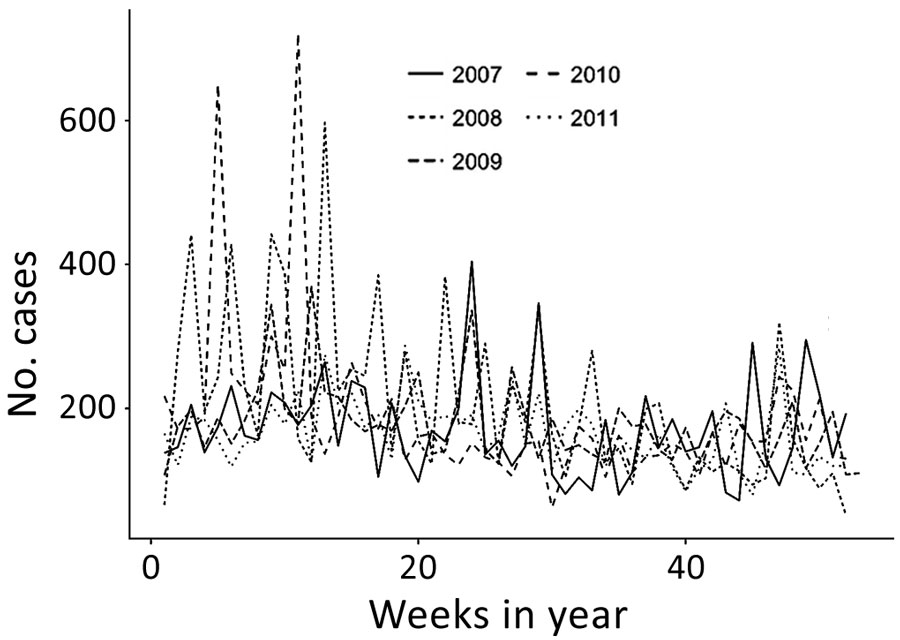Volume 26, Number 9—September 2020
Dispatch
Assessing 3 Outbreak Detection Algorithms in an Electronic Syndromic Surveillance System in a Resource-Limited Setting
Figure 1

Figure 1. Epidemic curve for nonbloody acute diarrheal disease cases, by week, captured by the Alerta and Vigila Systems, Peru, 2007–2011.
1These first authors were co–principal investigators and contributed equally to this article.
Page created: July 14, 2020
Page updated: August 19, 2020
Page reviewed: August 19, 2020
The conclusions, findings, and opinions expressed by authors contributing to this journal do not necessarily reflect the official position of the U.S. Department of Health and Human Services, the Public Health Service, the Centers for Disease Control and Prevention, or the authors' affiliated institutions. Use of trade names is for identification only and does not imply endorsement by any of the groups named above.